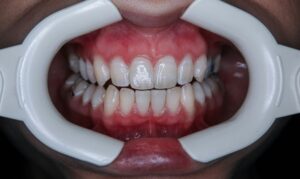While genetics and hormones are the primary causes of hair loss, lifestyle factors, including smoking, can significantly accelerate the process and exacerbate existing hair loss conditions. Smoking is known to have a wide range of negative health effects, and it can also play a role in both male and female pattern baldness. Research suggests that smoking can contribute to hair thinning, premature graying, and even increased hair shedding. In this article, we will explore the various ways smoking can lead to hair loss, the science behind it, and what you can do to prevent or manage the damage.
How Smoking Causes Hair Loss
Smoking can lead to hair loss through multiple mechanisms. The harmful chemicals in cigarettes impact the body in ways that directly affect the health of your hair follicles and scalp. Here are several key ways in which smoking contributes to hair loss:
1. Reduced Blood Flow to Hair Follicles
How It Happens:
Nicotine, the primary addictive substance in cigarettes, causes vasoconstriction, or the narrowing of blood vessels. When blood vessels constrict, blood flow to the scalp and hair follicles is reduced. Hair follicles require a steady supply of nutrients and oxygen delivered by the bloodstream to produce healthy hair. A decrease in blood flow compromises the follicles’ ability to function properly, leading to weakened hair shafts and follicle miniaturization (a process in which hair follicles shrink and produce thinner, weaker hair).
Impact on Hair Loss:
In individuals who are genetically predisposed to androgenetic alopecia (male or female pattern baldness), reduced blood flow due to smoking can accelerate the progression of hair thinning. The limited supply of oxygen and nutrients can cause hair follicles to enter the telogen phase (the resting phase of the hair cycle) prematurely, leading to increased shedding and slower hair regrowth.
2. Oxidative Stress and Hair Damage
How It Happens:
Smoking introduces free radicals into the body, which are unstable molecules that cause oxidative stress. These free radicals damage cells throughout the body, including those in the hair follicles and scalp. The cumulative effect of this cellular damage can lead to premature aging of the hair follicles, which reduces their ability to produce healthy hair.
Impact on Hair Loss:
Oxidative stress weakens hair follicles over time, causing them to produce thinner, more brittle hair. It also accelerates the aging process of the follicles, potentially leading to early-onset hair thinning or graying. Long-term oxidative damage can reduce hair density and make hair more prone to breaking and falling out.
3. Disruption of the Hair Growth Cycle
How It Happens:
Hair growth occurs in cycles, with hair follicles transitioning through phases of growth (anagen phase), rest (telogen phase), and shedding (catagen phase). Smoking has been shown to disrupt this natural hair growth cycle by increasing the rate at which hair enters the telogen phase. When more hair enters the resting phase prematurely, more hair is shed, leading to noticeable thinning.
Impact on Hair Loss:
Over time, the disruption of the hair growth cycle due to smoking can result in telogen effluvium, a condition characterized by excessive hair shedding. While telogen effluvium is often temporary, chronic smoking can cause this condition to persist, leading to ongoing thinning and difficulty maintaining hair density.
4. Damage to Hair DNA
How It Happens:
Smoking has been linked to DNA damage in the cells responsible for hair growth. The toxic chemicals found in cigarettes, such as formaldehyde and acetaldehyde, can damage the DNA in hair follicle cells, impairing their ability to divide and produce new hair. Over time, this damage can lead to weakened hair follicles that are less able to sustain healthy hair growth.
Impact on Hair Loss:
When the DNA of hair follicle cells is damaged, the quality and thickness of the hair produced by these follicles decline. This leads to weaker, thinner hair that is more prone to breakage and shedding. If the DNA damage is extensive, it can cause permanent hair loss, particularly in areas already affected by genetic thinning.
5. Increased Risk of Scalp Inflammation
How It Happens:
Smoking can cause chronic inflammation throughout the body, including the scalp. Inflammation in the scalp can affect the health of hair follicles by causing irritation, redness, and a buildup of inflammatory cells that may disrupt the hair growth process. Over time, this inflammation can lead to follicular miniaturization, where the hair follicles shrink and produce thinner hair.
Impact on Hair Loss:
Scalp inflammation reduces the ability of hair follicles to function properly, leading to weaker hair production and hair loss. Chronic inflammation can exacerbate conditions like androgenetic alopecia, speeding up the rate of hair thinning and shedding. It may also lead to conditions like seborrheic dermatitis or psoriasis, which further irritate the scalp and contribute to hair loss.
6. Hormonal Imbalances
How It Happens:
Smoking can affect the body’s hormonal balance, which plays a key role in hair growth. Smoking has been linked to an increase in levels of dihydrotestosterone (DHT), a hormone that contributes to male pattern baldness by causing hair follicles to shrink and eventually stop producing hair.
Impact on Hair Loss:
Higher DHT levels due to smoking can accelerate hair loss in men with a genetic predisposition to androgenetic alopecia. In women, smoking may affect hormone levels in ways that contribute to female pattern hair loss, particularly after menopause, when hormone levels naturally fluctuate.
Research Supporting the Link Between Smoking and Hair Loss
Numerous studies have shown a clear connection between smoking and hair loss. Here are a few key findings from research on the topic:
- A 2007 study published in the journal Archives of Dermatology found that men who smoke are twice as likely to experience moderate to severe hair loss compared to non-smokers. The study concluded that smoking accelerates hair loss in individuals with a genetic predisposition to androgenetic alopecia.
- A 2020 study published in the International Journal of Trichology observed that smoking increases the risk of early-onset androgenetic alopecia. The researchers found that the harmful chemicals in cigarettes negatively affect the hair follicles, causing them to weaken and become more susceptible to hair loss.
- Another study published in the British Journal of Dermatology found a link between smoking and premature graying of hair. The study suggested that the oxidative stress caused by smoking accelerates the aging process in hair follicles, leading to early graying and thinning.
Can Quitting Smoking Reverse Hair Loss?
While smoking can cause or exacerbate hair loss, the good news is that quitting smoking may help prevent further damage and promote hair regrowth in some cases. Here’s how quitting smoking can benefit your hair:
- Improved Blood Circulation: Once you quit smoking, your blood circulation improves, allowing more oxygen and nutrients to reach the hair follicles. This can enhance the health of your hair and scalp, potentially reversing some of the damage caused by smoking.
- Reduced Oxidative Stress: By quitting smoking, you reduce the number of free radicals in your body, lowering oxidative stress and giving your hair follicles a better chance to recover. Over time, this may lead to healthier, thicker hair growth.
- Hormonal Balance: Quitting smoking helps restore hormonal balance, which can reduce the impact of DHT on hair follicles and slow the progression of androgenetic alopecia.
- Decreased Inflammation: Without the constant influx of toxins from smoking, inflammation in the scalp may subside, allowing hair follicles to function more effectively and reducing hair thinning and shedding.
It’s important to note that while quitting smoking can slow hair loss and improve hair health, it may not completely reverse genetic hair loss. However, combining smoking cessation with other treatments such as minoxidil or finasteride can significantly improve outcomes.
Tips for Protecting Your Hair from Smoking-Related Damage
If you smoke and are concerned about hair loss, taking proactive steps to protect your hair and scalp is essential. Here are some tips to help minimize the damage:
- Quit Smoking: The most effective way to protect your hair from smoking-related damage is to quit smoking entirely. The sooner you quit, the better your chances of preserving your hair health.
- Eat a Healthy Diet: A diet rich in vitamins, minerals, and antioxidants can help counteract some of the damage caused by smoking. Nutrients like biotin, zinc, vitamin C, and omega-3 fatty acids promote healthy hair growth and scalp health.
- Use Hair Care Products with Antioxidants: Hair care products containing antioxidants, such as vitamin E or green tea extract, can help protect your hair from free radical damage caused by smoking.
- Stay Hydrated: Drinking plenty of water helps keep your scalp hydrated and flush out toxins, which can support healthier hair growth.
Conclusion
Smoking can have a significant impact on hair health, contributing to hair loss, thinning, and premature graying. The harmful chemicals in cigarettes reduce blood flow to the hair follicles, cause oxidative stress, and accelerate the aging of the scalp and hair follicles. Quitting smoking is one of the most effective ways to slow or prevent further hair loss and improve overall hair health. By taking proactive steps to protect your hair and addressing underlying lifestyle factors, you can minimize the impact of smoking on hair loss and enjoy healthier, stronger hair.




